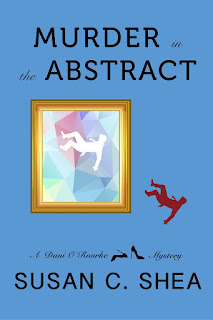Q: What’s the hardest thing you deal with in your books related to storytelling with one or more points of view?
- from Susan
When I started the first book in my first series, it was third person point of view: “she said,” “she thought;” but I felt I was too far away from Dani O’Rourke to get inside her head and to know her as a person. So, I began again in the first person – I told the story from her perspective. It gave me a lot more room for expressing her emotions, but it meant I could only share what she knew either from direct witness or from conversations she was part of. It required a bit of plot juggling, but I got the hang of it.
Three books later, I began a different series and decided I had to be more agile and creative in using the third person because I wanted to tell those stories from multiple direct perspectives – an American expat’s view of her adopted town in France, and someone who had lived there all her life. They were bound to see and understand the dynamics differently. I used what we call “close third person” for both characters, and tried to keep them engaged with other people and each other. I think it worked pretty well. In the second book, the recently released DRESSED FOR DEATH IN BURGUNDY, there are two POVs again, but the second one is a different person because she is central to this specific story.
Recently, I read a multiple award-winning novel that might be termed a family saga. The story is told in close third from a handful of points of view, sometimes in close narrative proximity. I had no problem with the switching voices, probably because she’s a good writer, but was surprised when I re-read the book to see how she pulled it off. She sometimes threw in a change of POV right in the middle of a paragraph! That’s a no-no in the writing classes and advice books but I think the story just propelled readers right past it.
I’m now experimenting, hoping I can take some liberties with the ‘rules’ on a stand-alone novel, suspecting that if my editors balk it will be because I haven’t done a good enough job of making these switches seem natural. Rules are fine and to be respected, but I get twitchy when they become brakes rather than guidelines.



3 comments:
Hi Susan - I've always used third person in my novels, but didn't know there was a distinction of "close" third person. Good to know!
re award-winning rule breakers: Louise Penny switches POV in the middle of a section - not sure about paragraph! - and it's kind of nice to see those rules being broken at times and it not mattering a bit.
Which of your books are available on audio?
Hey Susan,
Great post here!
I started my first novel draft in class in 3rd person because I wanted to be able to do more than just tell from my protagonists pov...I wanted to jump around and like you, go where I needed to go with the story. Felt like 1st. person was too limited. But when I workshopped it in class everyone was like, "change it to first...it will be way better."
So I started over, in first. It was ok, but felt super-limiting for where i wanted to take it. I also started getting so confused, and eventually got so stuck that I couldn't move forward, backward, or sideways with it!
I'm finally back to it now and going back to my original game plan. It's def. tricky to write in multiple pov, but if i can pull it off, it'll be great. Gotta go with my gut here!
Oh, James Lee Burke switches mid-chapter, sometimes between paragraphs too. And he does it seamlesslly!
Post a Comment